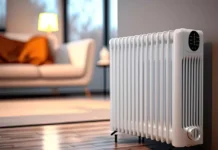Heat treatment for pests is a secure and efficient method that can eradicate various pests minus the need for strong chemicals. In this detailed manual, we will investigate the kinds of insects and ecosystems that work well with heat treatment, reveal its many advantages, and offer practical advice for successful application. At the conclusion of this article, you will possess the necessary information to make a well-informed choice regarding the utilisation of heat treatment for your pest control requirements.
Suitable Pests for Heat Treatment
Which pests could be destroyed by that method? The answer is pests such as insects, bedbugs, and drywood termites. By accurately controlling the temperature, it can eliminate all life phases of these pests without the use of chemicals. This eco-friendly approach leaves minimal residue and is particularly effective against a variety of common pests.
Bedbugs
Bedbugs are well-known for their capacity to invade households and bring unease to inhabitants. Feeding on human blood and reproducing quickly makes them difficult to get rid of with usual techniques. By increasing the temperature in a room, heat treatment successfully eliminates bed bugs by reaching a lethal level for the insects. It enters deeply into cracks, crevices, and hiding places where bedbugs frequently deposit their eggs, disrupting the life cycle and stopping future infestations.
Drywood Termites
Heat treatment is the perfect method for eliminating drywood termites. These termites invade dry wooden buildings like furniture, rafters, and fixtures, resulting in major damage that may not be noticed until it is extensive. Unlike subterranean termites, drywood termites do not live in the soil, making them difficult to reach using traditional liquid termite treatments. Heat treatment effectively targets these termites by penetrating the wood and reaching the deepest parts of the infestation.
Other Wood-Destroying Insects
Heat treatment can eradicate not only drywood termites but also other wood-boring insects that harm furniture, timber structures, and valuable wooden items. The insects consist of powderpost beetles, old house borers, and furniture beetles. Heat treatment successfully eliminates these pests at every phase of their life cycle, halting additional harm and guaranteeing wooden resources are preserved.
Suitable Environments for Heat Treatment
Heat treatment effectively eliminates various pests in homes and businesses by raising the indoor temperature to lethal levels for pests. This eco-friendly method does not use pesticides, reducing resistance risks. Its quick process is appealing to both homeowners and businesses, ensuring safety and temperature monitoring.
Heat treatment can be used across various environments, making it a versatile pest control solution. These environments include:
- Residential Homes – heat treatment, a non-chemical method for pest control, successfully addresses a range of residential settings such as individual houses, apartments, and townhomes. Businesses give importance to safety, collaborating with homeowners to safeguard residents and belongings, and also reducing interruptions by completing tasks promptly.
- Commercial Buildings – heat treatment pest management is successful for business establishments such as offices, retail stores, warehouses, and restaurants. It gets rid of pests naturally, establishing a safe environment for both employees and customers by avoiding chemical use. Local treatments reduce disruptions to businesses.
- Industrial Sites – industrial facilities, like manufacturing plants and warehouses, often deal with pest issues. Heat treatment, an eco-friendly method, can effectively control pests without heavy chemical use. This process can be customised for each facility’s needs, ensuring efficient pest control and operations.
- Heritage and Cultural Sites – heat treatment is an effective way to protect important structures and items in heritage sites like museums, libraries, and historical buildings. It can reach difficult spots to control pests without harming the integrity of the objects.

















